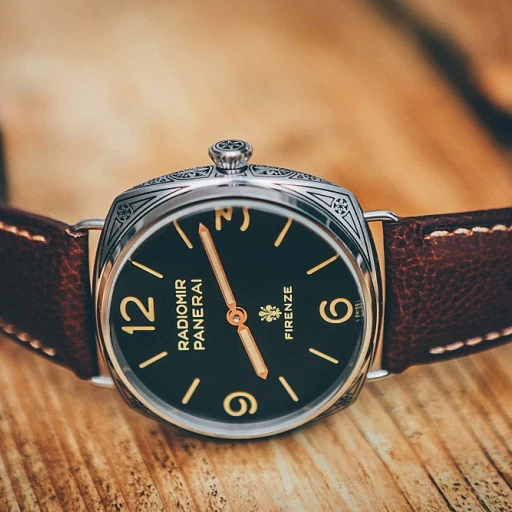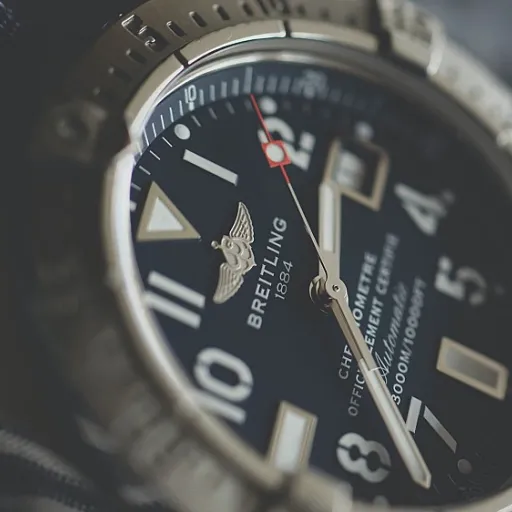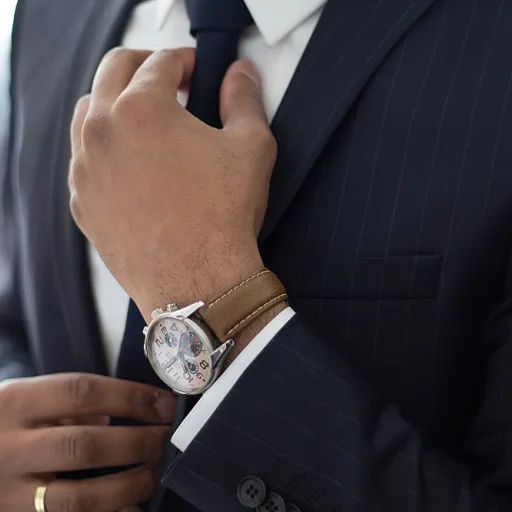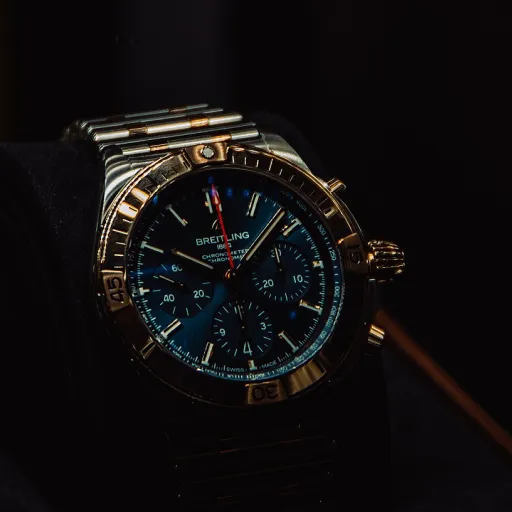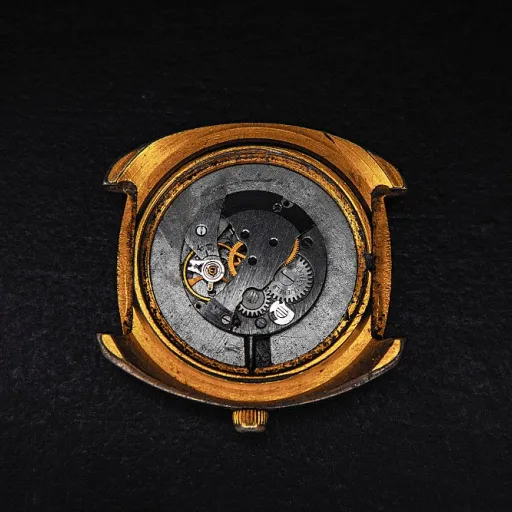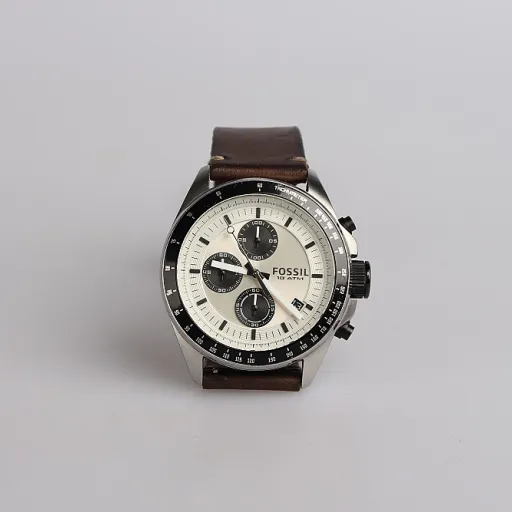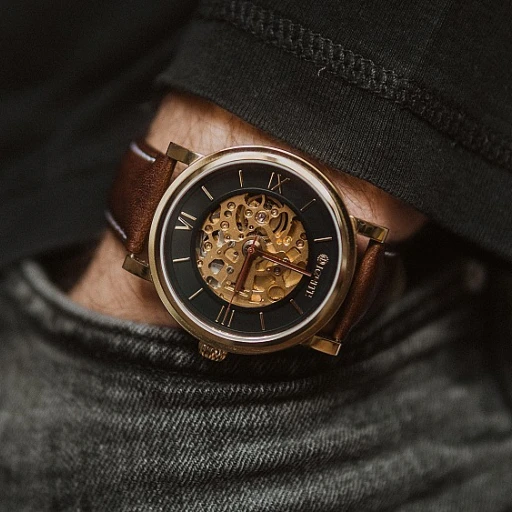
Understanding the Sellita SW500 chronograph movement
What Makes the SW500 Stand Out in Modern Chronographs
The Sellita SW500 movement is a cornerstone in the world of contemporary chronograph watches. Known for its reliability and adaptability, this movement powers a range of timepieces, from robust dive watches to limited edition releases. The SW500 is often compared to the legendary Valjoux 7750, sharing much of its architecture and functionality, which makes it a favorite among both established brands and independent watchmakers.
Inside the SW500, you'll find a complex assembly of gears, levers, and cams that allow for precise measurement of elapsed time. The chronograph hand, which runs centrally over the dial, is the most visible part of this mechanism. When activated, it sweeps smoothly, tracking seconds with accuracy. However, even the best movements can experience misalignment over the years, especially in vintage models or watches that see regular use.
- The SW500 is automatic, meaning it winds itself as you wear it.
- It features a column wheel or cam-actuated chronograph, depending on the version.
- Many top brands use the SW500 as the movement inside their chronograph models.
- It supports additional complications, such as day and date, making it versatile for different watch designs.
Understanding how the SW500 operates is essential before attempting any calibration. The movement's design allows for relatively straightforward servicing, but precision is key. Members of watch forums often share posts and threads about their experiences with the SW500, highlighting both its strengths and the occasional challenge, like chronograph hand misalignment.
If you're interested in the broader context of Swiss movements and how they compare, you might find this exploration of the Rolex Cal. 700 movement insightful. It provides a deeper dive into what sets top-tier movements apart, helping enthusiasts appreciate the engineering behind their favorite watches.
Whether you're dealing with a big, bold chronograph or a subtle vintage piece, knowing what's inside your watch will help you maintain it well for years to come. In the next sections, we'll look at why chronograph hands may lose alignment and how to safely bring them back to zero.
Common reasons for chronograph hand misalignment
Why Does the Chronograph Hand Lose Its Precision?
Even the most respected movements like the Sellita SW500 can experience chronograph hand misalignment over time. This is a common topic among watch enthusiasts, especially those who appreciate the engineering inside top dive watches or limited edition chronographs. Understanding why this happens will help you maintain your watch’s accuracy and enjoy its performance for years.
- Physical Shocks: Everyday knocks, accidental drops, or even a big jolt can cause the chronograph hand to shift from its zero position. This is particularly relevant for vintage models, where the movement inside may be more sensitive to impact.
- Wear and Tear: Over the years, regular use can lead to slight loosening of the hand or the components that control its reset function. Even the best movement Sellita produces is not immune to the effects of time.
- Improper Handling: Resetting the chronograph while it’s still running, or mishandling the pushers, can stress the mechanism. This is a frequent issue discussed in watch forums and threads among members who share their experiences with various posts about chronograph maintenance.
- Manufacturing Tolerances: Sometimes, even new watches may show a minor misalignment due to production tolerances. This is rare but possible, even in limited edition or top-tier models.
Misalignment doesn’t always mean there’s a serious problem with your Sellita movement. However, it’s a sign that your watch could benefit from a careful calibration. If you’re passionate about keeping your chronograph running as it should, understanding these causes is the first step. For those interested in the aesthetics as well as the mechanics, the allure of white and gold watches for men is another aspect of luxury watch ownership that combines style with precision.
In the next section, we’ll cover the essential tools you’ll need to safely calibrate your chronograph hand, ensuring your rights reserved to enjoy your timepiece at its best.
Tools required for safe calibration
Essential Equipment for Accurate Chronograph Calibration
When working with the Sellita SW500 movement inside your watch, having the right tools is crucial for a safe and precise calibration. Whether you’re a seasoned collector or just starting to explore the world of dive watches and chronographs, using proper equipment will help protect your investment and ensure your timepiece runs as intended.- Case back opener: Most modern and vintage watches require a specific tool to safely open the case back without scratching or damaging the finish. For limited edition or big watches, make sure your opener fits the case size.
- Non-magnetic tweezers: These are essential for handling small components inside the movement sellita without the risk of magnetizing parts, which could affect timekeeping accuracy.
- Hand remover and hand setter: To adjust the chronograph hand, you’ll need a precise hand remover to lift the hand without bending it, and a hand setter to reposition it at zero. This is especially important for blue or colored hands, which can show marks easily.
- Loupe or magnifying glass: A clear view of the movement inside will help you see alignment marks and avoid mistakes. Many members of watch forums recommend at least a 5x magnification for working on the Sellita SW500.
- Soft, lint-free cloth: Protect your watch and movement from dust and scratches by working on a clean surface. This is a top tip for anyone handling luxury watches.
- Rodico or similar cleaning putty: Useful for picking up small parts and cleaning surfaces inside the movement without leaving residue.
Step-by-step guide to zeroing the chronograph hand
Preparing Your Workspace and Watch
Before you begin, make sure your workspace is clean, well-lit, and free from dust. Lay down a soft cloth to protect your watch and its movement. Remove the case back of your Sellita SW500-equipped watch using the appropriate case opener. Always handle the watch and its components with care to avoid scratches or accidental damage.Accessing the Chronograph Mechanism
With the case back removed, locate the chronograph module inside the movement. The Sellita SW500 is based on a robust design, but its chronograph mechanism can be sensitive. Identify the chronograph hand and the corresponding reset hammer and heart cam, which are responsible for returning the hand to zero.Zeroing the Chronograph Hand
- Gently pull the crown to the time-setting position to stop the movement. This helps prevent accidental damage while you work.
- Using a non-magnetic, fine-tipped tool, carefully press the chronograph reset button. Observe if the chronograph hand returns to zero. If it does not, you may need to adjust the hand’s position manually.
- If adjustment is needed, use a hand remover tool to gently lift the chronograph hand from its post. Take care not to bend or scratch the hand.
- Align the hand precisely at the zero (12 o’clock) position. Reinstall the hand using a hand-setting tool, applying even pressure to avoid damaging the post or the hand itself.
- Test the chronograph function by starting, stopping, and resetting it several times. Ensure the hand consistently returns to zero.
Final Checks and Reassembly
Before closing the case back, inspect the movement for any dust or debris. Confirm that all functions, including the chronograph and timekeeping, run smoothly. Once satisfied, carefully reseal the case back, ensuring the gasket is properly seated to maintain water resistance—especially important for dive watches and limited edition models. Your Sellita movement inside should now perform as intended, with the chronograph hand resetting perfectly to zero.Potential risks and how to avoid them
Risks to Be Aware of During Chronograph Hand Calibration
Calibrating the chronograph hand on a Sellita SW500 movement is a rewarding task for watch enthusiasts, but it comes with certain risks that should not be underestimated. Understanding these potential pitfalls will help you maintain the integrity of your watch and avoid costly mistakes.- Damage to the Movement: The SW500 is a robust movement inside many top dive watches and limited edition models, but its chronograph mechanism is delicate. Applying too much force or using the wrong tools can cause irreversible damage to the movement sellita, especially if you are not familiar with the components inside.
- Scratching the Dial or Hands: Slipping with a tool while adjusting the chronograph hand can easily scratch the dial or the hand itself. Vintage watches are particularly vulnerable, as their components may be more fragile due to age.
- Incorrect Reassembly: If you need to remove the case back or other parts, reassembling the watch incorrectly can lead to water resistance issues or even cause the chronograph to run improperly. This is a common issue discussed in watch forums and threads among members passionate about dive watches and chronographs.
- Loss of Small Parts: The SW500 movement contains many tiny screws and springs. Losing even one can render your watch inoperable until a replacement is sourced, which can be challenging for limited edition or vintage models.
- Voiding Warranty: Opening the case or making adjustments yourself may void the manufacturer's warranty or any rights reserved by the brand. Always check your warranty terms before starting.
Best Practices to Minimize Risks
- Work in a clean, well-lit environment to help prevent losing small parts.
- Use only the recommended tools for Sellita movements, as outlined in previous posts.
- Take your time and avoid rushing the process, especially if this is your first year working on chronograph watches.
- If you are unsure at any step, consider seeking advice from experienced members in reputable watch forums or consult a professional watchmaker.
- Always respect privacy policy guidelines when sharing your experience or seeking help online.
When to consult a professional watchmaker
Recognizing When Professional Expertise Is Needed
Even for experienced members of the watch community, there are moments when calibrating the chronograph hand on a Sellita SW500 movement is best left to a professional. While many enthusiasts enjoy working inside their watches, certain situations demand specialized tools, knowledge, and a steady hand that only a trained watchmaker can provide.
- Persistent misalignment: If the chronograph hand refuses to zero after careful adjustment, there may be an underlying issue with the movement inside, such as a worn component or a deeper mechanical fault.
- Unusual resistance or noises: Feeling unexpected resistance or hearing odd sounds while adjusting the hand can indicate internal damage. Forcing the mechanism risks further harm to the movement Sellita, especially in limited edition or vintage pieces.
- Lack of proper tools: Using makeshift tools instead of those recommended in the earlier section can lead to scratches, stripped screws, or even broken parts. Dive watches and chronographs often require specialized equipment to maintain their integrity.
- Warranty and value concerns: Opening a watch yourself may void warranties or reduce resale value, particularly for top-tier or big name brands. Protecting your investment is crucial.
Professional watchmakers have access to diagnostic equipment and genuine Sellita parts, ensuring your chronograph runs as intended. They can also spot issues that might not be visible to the untrained eye, helping to preserve the accuracy and longevity of your timepiece for years to come.
Remember, while online threads and posts can help guide you, nothing replaces the expertise of a certified watchmaker. When in doubt, entrust your watch to a professional—your rights reserved under most privacy policy agreements will also be better protected this way.


